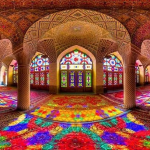Dushan County is probably a place you’ve never heard of, let alone considered visiting. Tucked away in the karst mountains of southwest China’s Guizhou province, this small county town is home to a surreal, semi-abandoned “ghost city”. It’s an ideal destination for anyone curious about the history of China’s resistance during the Second World War, as well as the urban planning challenges faced during the Xi Jinping era.
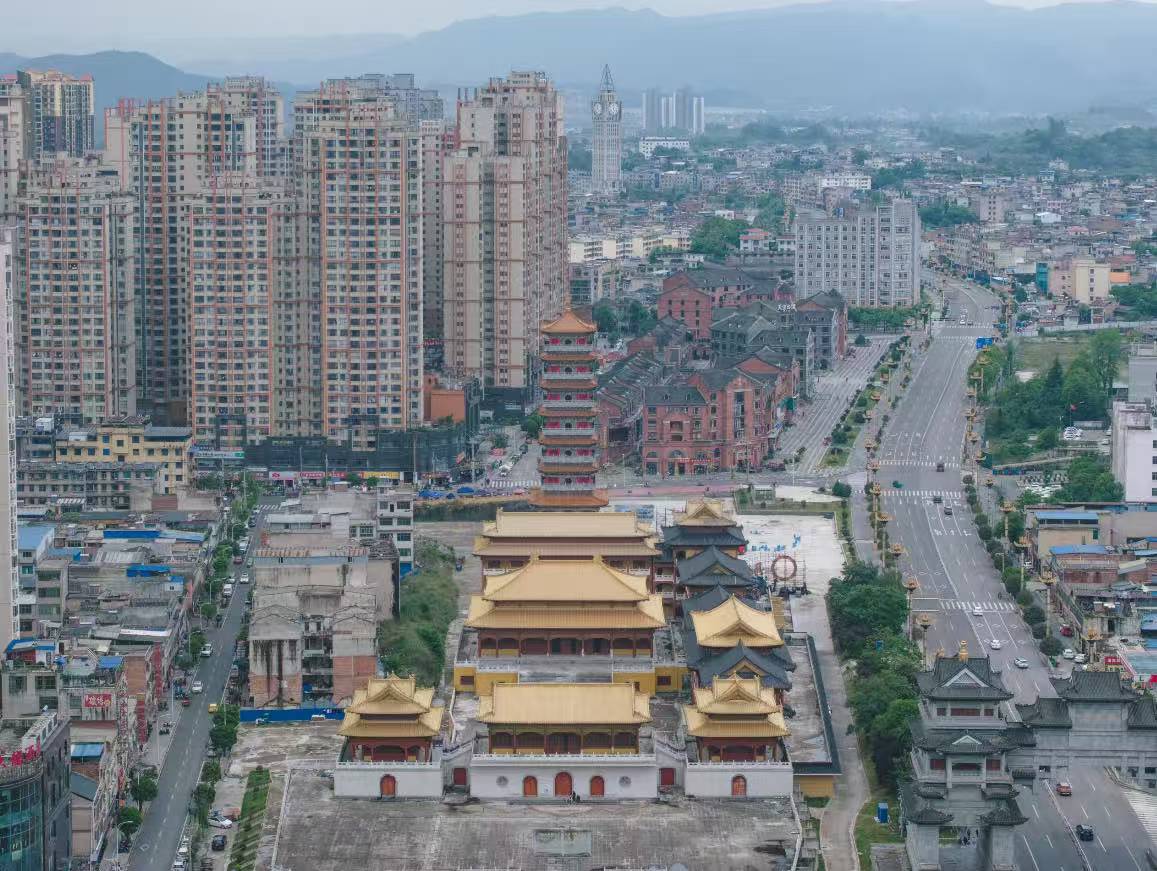
Table of Contents
The background of Dushan
When people think of ghost cities in China, Ordos Kangbashi usually springs to mind – a place infamous for its vast, empty avenues and futuristic skyline. But Ordos is a wealthy, resource-rich city that could afford to build a lavish urban centre on land with little commercial value. Its problem was one of overspending rather than survival. And over the years, although it still feels lifeless, Kangbashi has seen some signs of recovery.
Dushan, on the other hand, tells a different and far more complex story. Located in the far south of Guizhou province, right on the border with Guangxi, it is a small county under the Qiannan Autonomous Prefecture, home to just around 360,000 people. Unlike Ordos, most of Dushan has become a true dead ghost town, eerily quiet and half-built. Just a few years ago, even within China, few had ever heard of it.
Dushan shot to national attention in 2019, when both the Communist Party Secretary and the County Governor were arrested on corruption charges. In fact, the top officials from all eight townships and twenty-five county departments were almost entirely swept away in a massive anti-corruption crackdown. Between January and May that year alone, Dushan’s former head of propaganda, head of legal affairs, and deputy governor were all taken in for investigation. At the time, Dushan was still classified as a national-level poverty-stricken county.
What shocked many was the revelation that this remote mountain town had accumulated ¥40 billion CNY (approx. $5.5 billion USD) in debt, hoping to transform itself into a premier tourist hub, a commercial centre, a high-tech city, and even an educational powerhouse. Beneath all these ambitious labels, however, lay countless unfinished buildings and funds that had mysteriously vanished.
Since the dramatic fall of the county’s leadership, the burden of cleaning up the mess has fallen squarely on the shoulders of their successors and the local people. Vast complexes of faux-ancient architecture now stand empty, tech and business parks look finished on the outside but are gutted within, education zones lie abandoned, and grand plans for tourist attractions are stalled or crumbling. This situation reflects not only the legacy of Dushan’s corrupt former officials, but also the broader structural challenges of Xi Jinping era China: stalled real estate, a shifting economic model, persistent local corruption, and weak administrative capacity – all made concrete, literally, in the form of half-finished cities like Dushan.
But Dushan holds more than modern tragedy. As a remote border town, it also carries a weighty historical significance. During the Second World War, Japanese forces pushed deep into China. Dushan was the last town they reached before their advance stalled. Here, you can get a sense of just how far the Japanese occupation extended, and how devastating that period was for China.
In this sense, Dushan offers a rare window into both modern and contemporary China. It’s a microcosm of the country’s struggles, ambitions, and contradictions – a fascinating, little-known gem that few tourists ever discover.
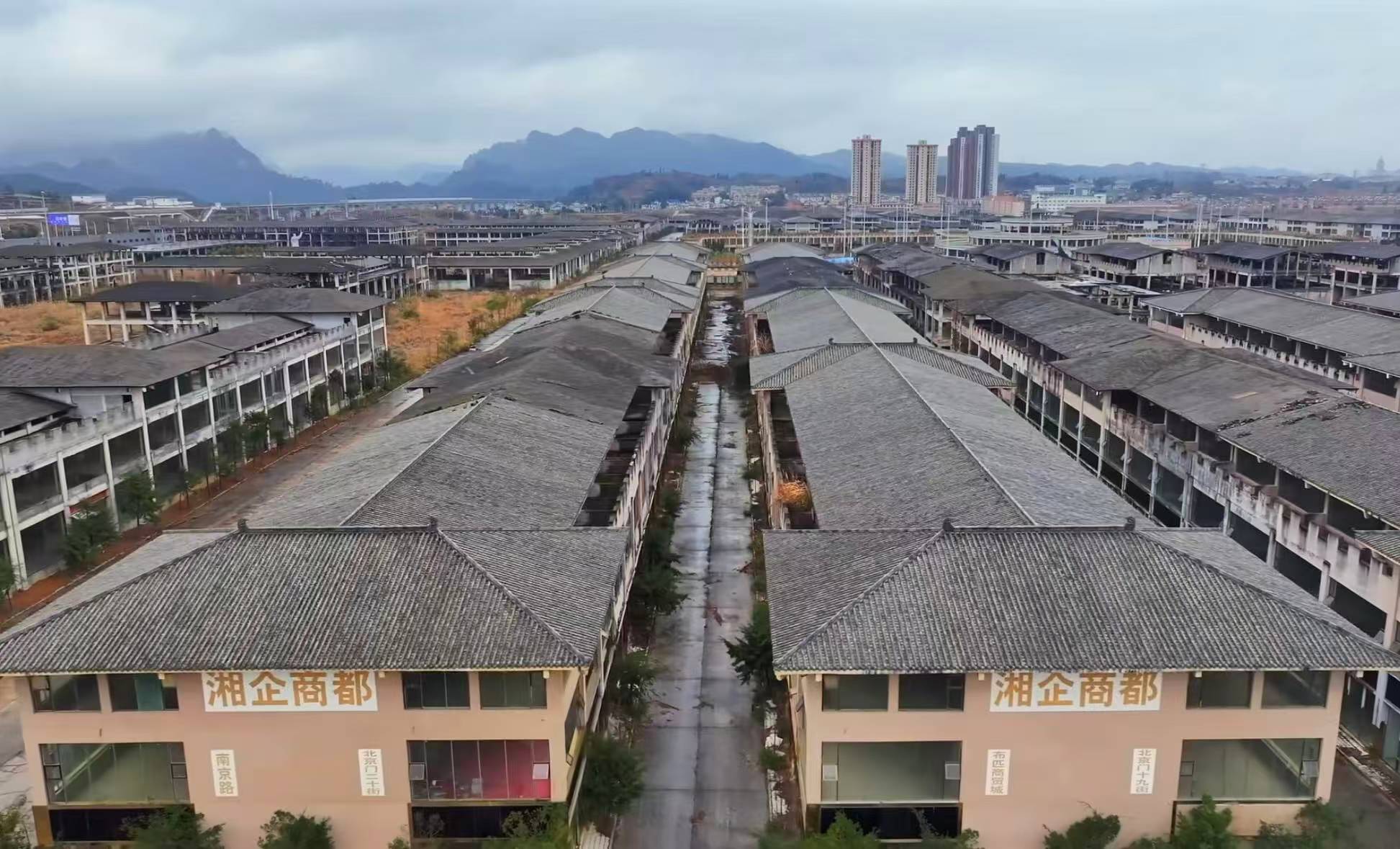
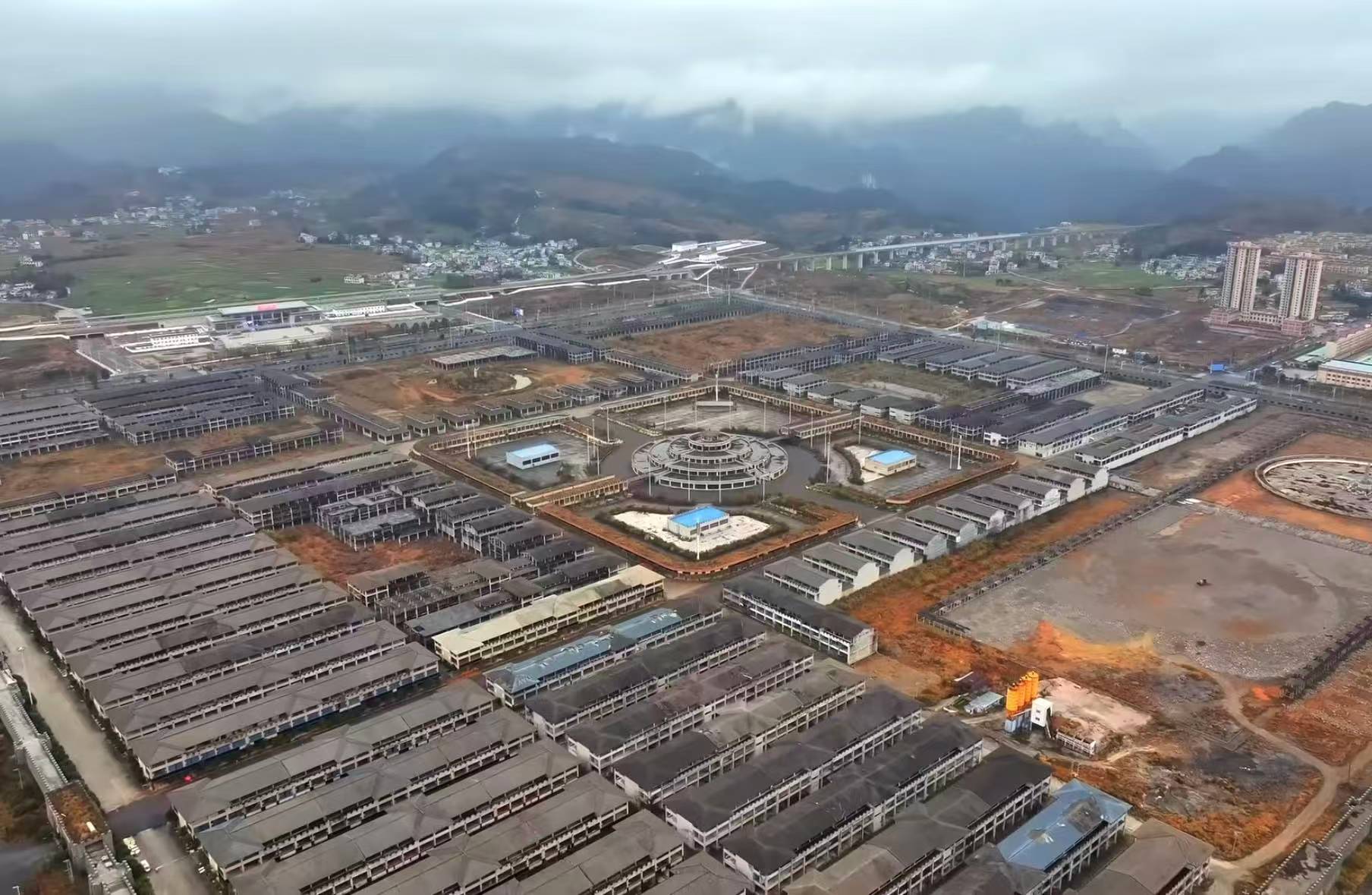
Places to Visit in Dushan
Shuisilou & Jingxin Valley 水司楼 & 净心谷
In China, if someone has heard of Dushan, chances are they know about Shuisilou. This building has become the most recognisable symbol of the county’s failed mega-projects-a physical monument to the unrealistic ambitions that shaped Dushan’s modern history.
The name “Shuisilou” is a coined Chinese term made up of three characters and doesn’t translate easily into other languages. At first glance, even Chinese speakers might assume it refers to some kind of traditional structure from the southwest. But that’s misleading. “Shui” refers to the local Shui ethnic minority. “Si” means to inherit or carry forward, while “lou” simply means building or tower. So, in essence, the name suggests a tower that carries forward the traditional residential style of the Shui people-meant to stand as a sort of southwestern Chinese version of the Potala Palace.
The only problem is, Shui traditions don’t actually include grand, elaborate homes like this, and the region’s real architectural legacy is associated with “Tusi” heritage, not “Shuisi”. From the very beginning, the project was a Frankenstein creation-neither traditional nor appropriate.
Dushan poured ¥256 million CNY (around $35.6 million USD) into building this peculiar “Guizhou Potala Palace”, claiming it to be the world’s tallest timber-framed structure using traditional Chinese joinery techniques, with no nails, standing 99.9 metres tall and covering around 60,000 square metres. Construction came to a halt in 2018 when funding ran out.
Over the years, various companies have taken over the project and tried to revive it, but as expected, the original wooden structure failed to meet modern fire safety standards. As a result, the rebuilding effort switched back to conventional materials-reinforced concrete and a bright blue metal roof replaced the original wooden frame and green-tiled eaves. What remained was large and imposing, but the elegance and charm of the traditional style were gone.
Today, although roughly half the floors remain unfinished and closed to the public, Shuisilou has partially reopened as a functioning hotel. Compared to the Ryugyong Hotel in Pyongyang, which serves only as a massive LED screen while its interior remains completely abandoned. Shuisilou does at least offer some practical use.
Shuisilou sits within the Jingxin Valley scenic area. “Jingxin” means to cleanse the heart or purify the mind. The site was planned as an all-in-one tourist destination, centred around nature, ethnic culture, and spiritual wellness. Many of its traditional Chinese-style towers and pavilions were, like the original vision for Shuisilou, constructed with real timber. But the commercial sections now lie eerily empty. Surrounded by flowing rivers, steep hills and well-crafted wooden pavilions, the area gives off an unsettling and ghostly atmosphere-beautiful, but hollow.

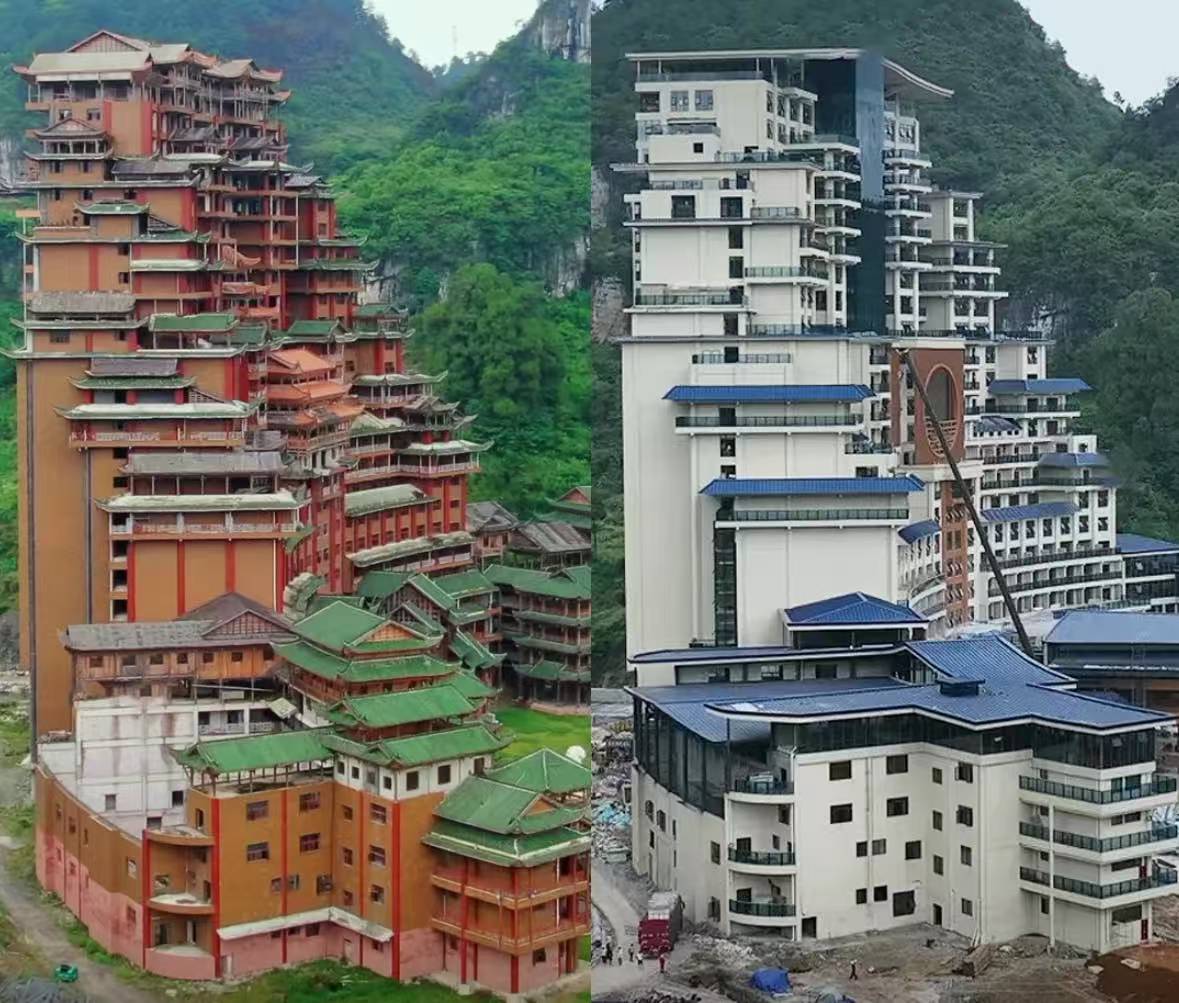
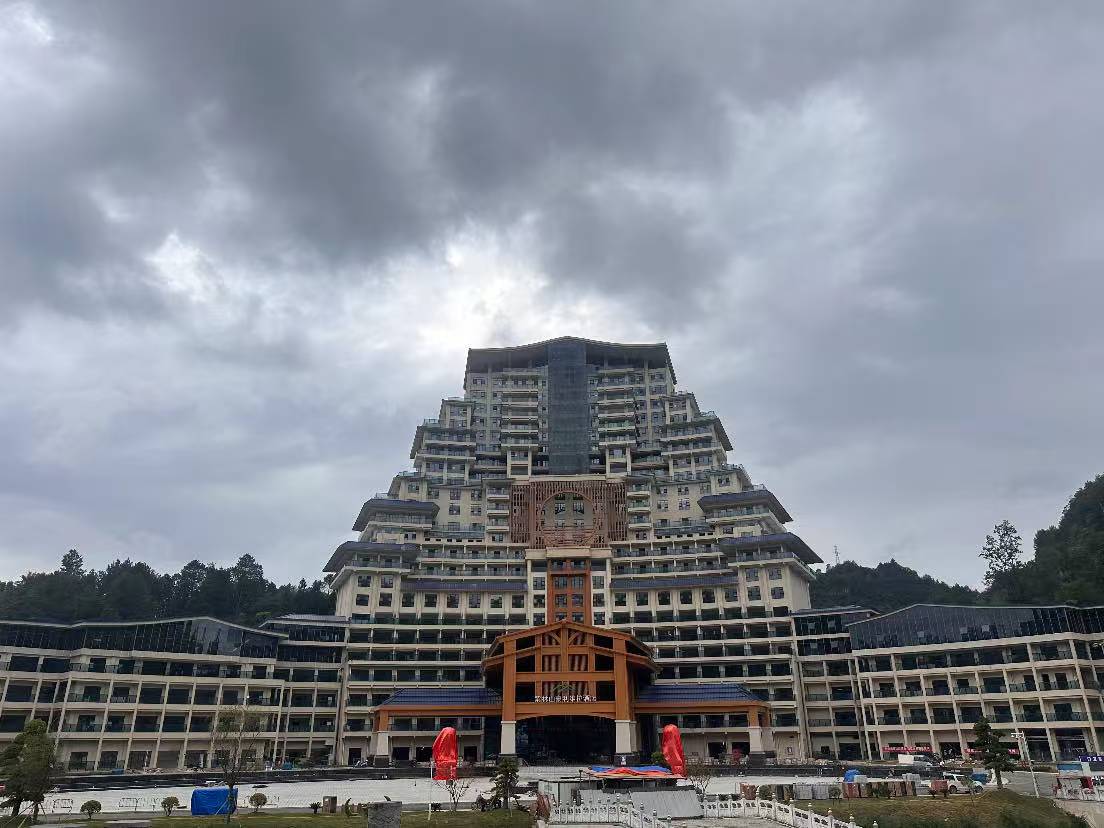
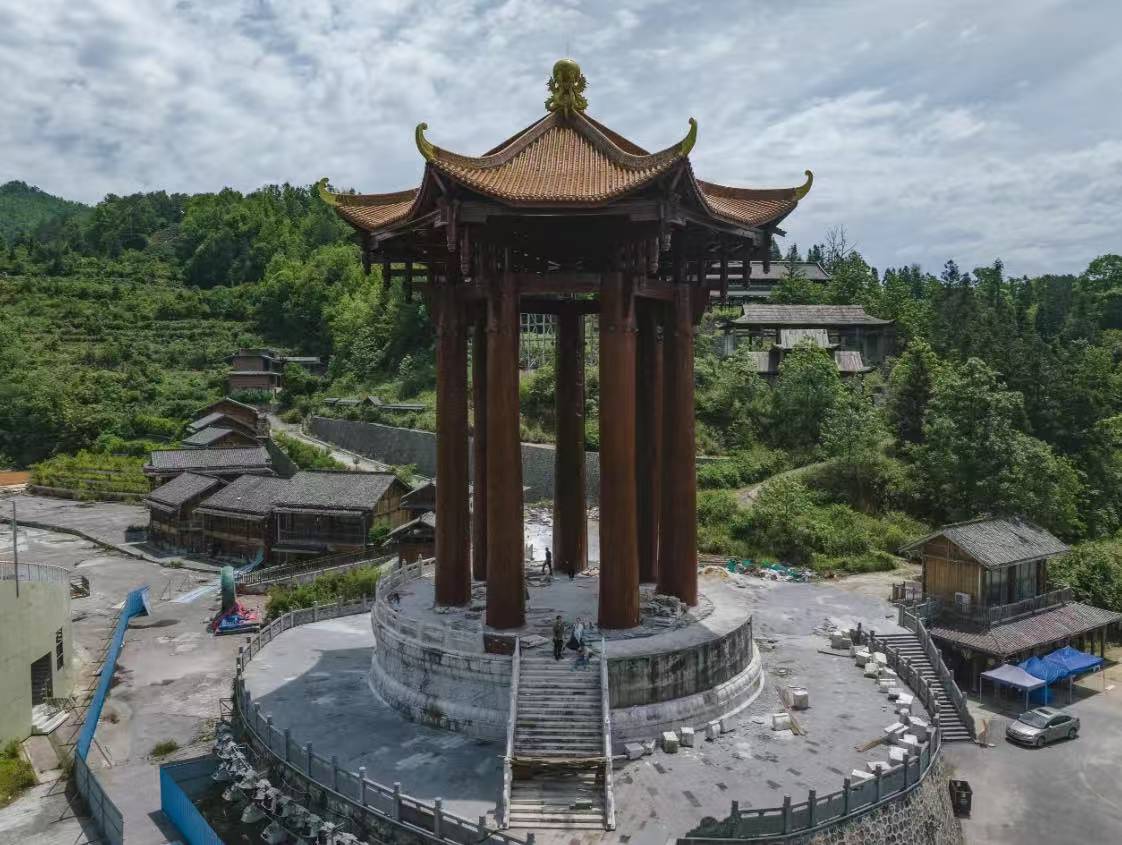
Dushan University Town 独山大学城
Dushan University Town, also known as Dushan Education City, was launched around 2013, the year Xi Jinping rose to power. It was planned as a massive higher and vocational education hub for southern Guizhou. The project aimed to cover roughly 10 square kilometres, with space for around ten universities and colleges, complete with teaching buildings, dormitories, libraries, and other campus infrastructure. The total planned investment stretched into the billions of yuan.
But the vision quickly ran into trouble. The scale far exceeded local demand, and as the funding chain began to collapse, construction stalled. Today, only a few buildings have been completed and put to use. One institution, Qiannan Normal University for Nationalities, briefly opened a satellite campus here but later pulled out. Most of the buildings now sit abandoned or unfinished, turning the project into one of the region’s most prominent white elephants.
In recent years, local authorities have tried to repurpose the empty facilities, proposing start-up incubators and vocational training centres. Despite these efforts, the site remains largely underused, a striking symbol of overambitious planning and fiscal mismanagement.
Dushan Clock Tower 独山钟楼
Dushan’s Clock Tower is the county’s own take on Big Ben. With a price tag of ¥30 million CNY (approximately $4.2 million USD), it might just be the most practical of all the grand construction projects in the area. Standing 30 metres tall, the tower was only recently completed after years of delay, during which it lacked an actual working clock. The missing timepiece has now been installed, finally giving the structure a purpose: telling the time for the entire town.
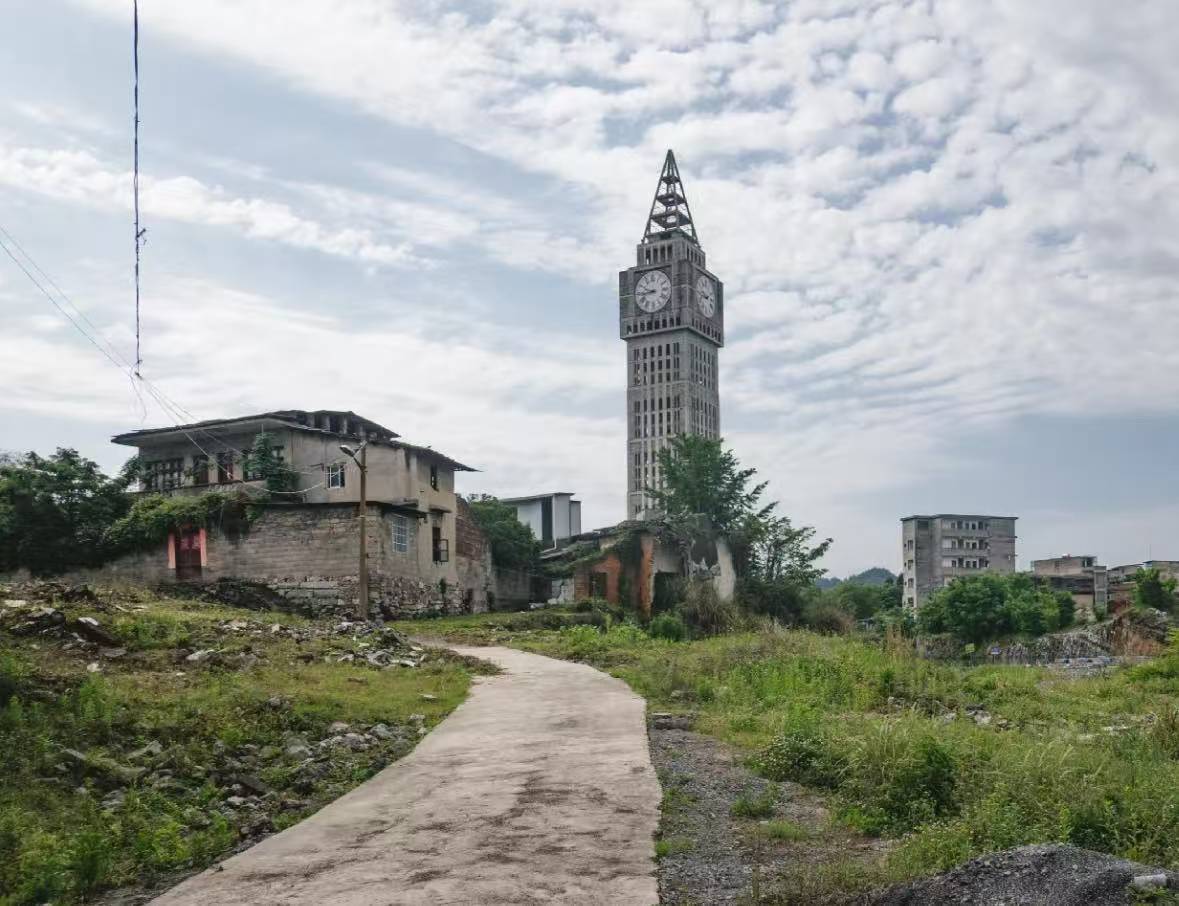
Dushan County Museum (Now Dushan Library) 独山博物馆(现图书馆)
The Dushan County Museum was one of the most lavish and extravagant of all the county’s faux-ancient construction projects-and one of the first to be completed. At first glance, its exterior could easily fool someone into thinking it’s an authentic historical building from Beijing.
Before the Covid-19 pandemic – and before the county’s leadership was arrested and sentenced – the museum housed over a thousand replicas of famous Chinese cultural relics. Yes, you read that right: the entire collection consisted of fakes, with no real connection to the local area. Calling it a “museum” under those circumstances was more than a stretch. As Dushan’s own county museum, it overlooked the unique history of the local ethnic minorities and neglected the painful, unforgettable stories of the Anti-Japanese War. Perhaps it’s no surprise that it has since been converted into a library.
Shenhe Bridge Anti-Japanese War Site 深河桥抗战遗址
By 1944, as the Second World War was turning decisively against the Axis powers, the Japanese army sought to reverse their losses in Southeast Asia and the Pacific by launching major campaigns in China’s Henan, Hunan, and Guangxi provinces. Their aim was to reopen vital land routes across the Chinese mainland.
After occupying Guilin and Liuzhou in Guangxi, the Japanese forces pushed into Guizhou province. In early December, they seized Dushan, a key town in southern Guizhou. Wherever they went, they left destruction in their wake-burning homes, killing civilians, and looting. In Dushan alone, nearly 20,000 people lost their lives, and over 16,000 houses were destroyed.
As the war raged on, the Republic of China’s capital moved progressively westward from Nanjing to Chongqing. Almost all supplies had to pass through the railway at Shenhe Bridge in Dushan. The Japanese advance into Guizhou posed a severe threat, even endangering the government’s plans to relocate the capital again. To halt the enemy’s progress, Chinese forces were forced to destroy Shenhe Bridge.
Today, visitors can see the fully restored Shenhe Bridge, the memorial to anti-Japanese martyrs, and the war museum. These sites offer a direct connection to the final chapter of China’s bitter struggle against Japanese invasion.
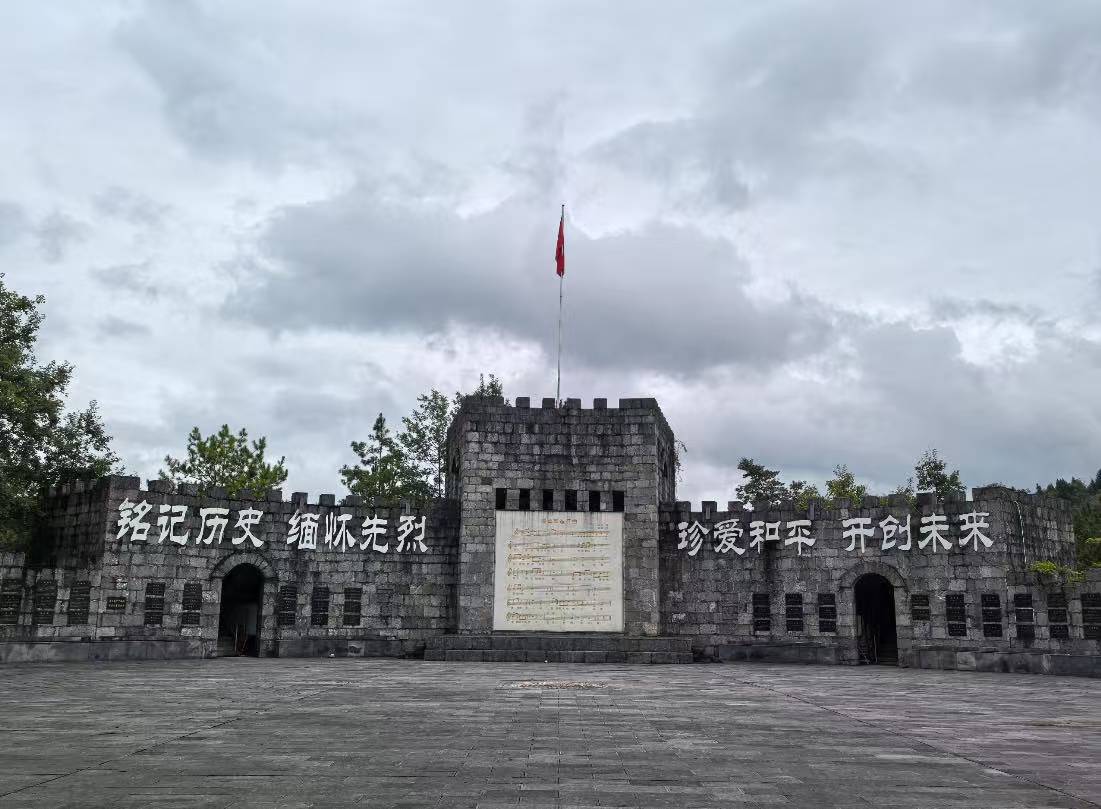
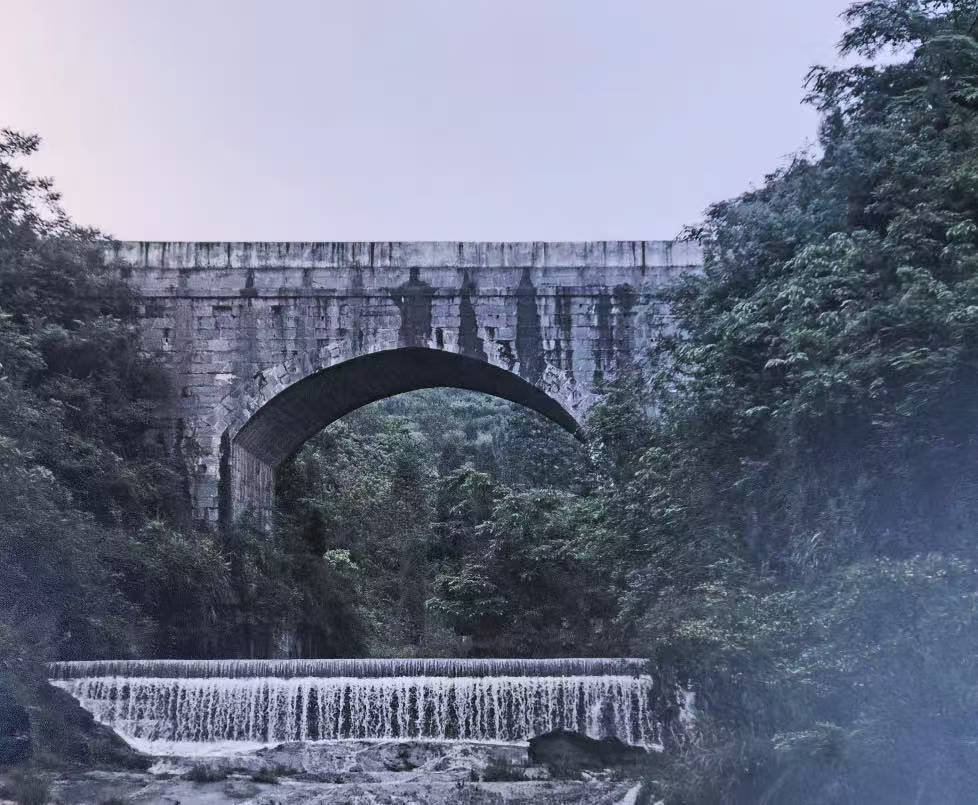
Food in Dushan
Dushan’s food is famous for its unique Qiannan (Southern Guizhou) flavours and rich ethnic minority culinary traditions. It blends sour, spicy, fresh, and aromatic tastes, showcasing the culinary wisdom of the Bouyei, Miao, Shui, and other local minority groups.
The most iconic speciality is the “Dushan Three Sours” (独山三酸): salted pickled vegetables (盐酸), fermented shrimp (虾酸), and the “stinky sour” (臭酸).
These fermented dishes are famous for their distinctive preparation methods and appetising flavours.
Salted pickled vegetables use leafy greens marinated with glutinous rice wine, chilli, and other ingredients, resulting in a tangy, spicy crunch that can be enjoyed on its own or as part of other dishes.
Fermented shrimp, made from small river shrimp, has a rich flavour and features in local favourites like fermented shrimp beef and shrimp hotpot.
The stinky sour is made by fermenting various vegetables and meats for a long time-said to have originated from ancient efforts to preserve meat by fermenting it with vegetables in jars. Its smell is strong, but the taste is uniquely delicious.
Besides these, Dushan offers a range of memorable snacks such as glutinous rice cakes called “ciba”, colourful five-grain rice, and the traditional Bouyei dumplings known as “daliangba”. Dushan’s rice noodles are famous for their smooth texture and fresh broth, usually served with local salted pickles and chilli to create a flavour uniquely its own.



How to get to Dushan?
Dushan is a small county tucked away deep in the mountains, and it only recently gained a high-speed rail connection. Besides taking the high-speed train directly, the best way to get there is via Guiyang, the capital of Guizhou province. Guiyang boasts an international airport and an extensive rail network, making it highly accessible.
For a more authentic travel experience, you can catch a direct coach from Guiyang East Bus Station to Dushan. Riding alongside locals on this classic form of Chinese travel offers a genuine glimpse into everyday life on the road.
Conclusion
Dushan is truly an off-the-beaten-path destination in China and one of the essential stops for anyone seeking a full understanding of China under Xi Jinping – a period that has seen profound changes since the era of reform and opening-up.
Click here to find out more about YPT’s China tour.





